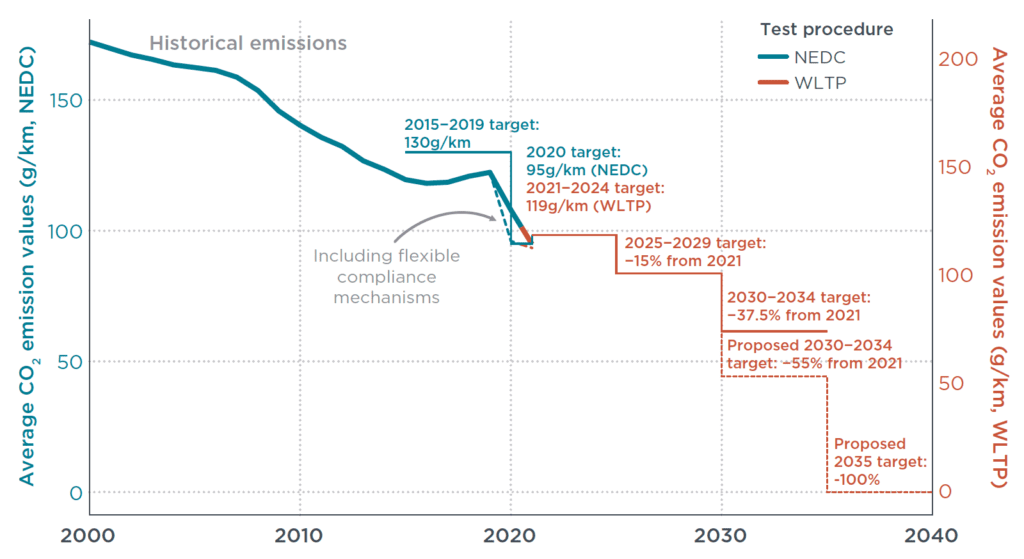CO2 emissions from new passenger cars in Europe: Car manufacturers’ performance in 2020
Briefing
CO2 emissions from new passenger cars in Europe: Car manufacturers’ performance in 2021
This briefing paper provides an overview of CO2 emission levels of new passenger cars in the European Union in 2020 based on a preliminary dataset recently released by the European Environment Agency. The dataset showed that new cars sold in the European Economic Area in 2021 had average CO2 emissions of 115 g/km determined following the Worldwide Harmonized Light Vehicles Test Procedure (WLTP), which is approximately 16 g/km lower than average emissions in 2020. Including flexible compliance mechanisms, average emissions declined to 113 g/km.
According to the preliminary data, all manufacturers appear to have met their 2021 CO2 targets. Only two manufacturer pools required flexible compliance mechanisms to do so. Eight out of ten pools had already exhausted their super-credits in 2020 for vehicles with New European Driving Cycle (NEDC) CO2 emissions below 50 g/km, which are capped at 7.5 g/km for the period 2020–2022. Eco-innovation technologies awarded for innovative technologies, lowered CO2 emission levels by 0.2 to 2.0 g/km.
Uptake of all forms of electrified powertrain vehicles increased from 2020 to 2021. Battery electric vehicle (BEV) market shares grew from 6.1% to 10.1% and plug-in hybrid electric vehicle (PHEV) shares grew from 5.3% to 9.2%. Hybrid electric vehicle (HEV) shares grew by roughly one third, from 4.7% to 6.6%, and mild hybrid electric vehicle (MHEV) shares using 48-volt systems almost doubled from 7.7% to 13.8%. Diesel market shares, including mild-hybrid electric vehicles, continued to fall, decreasing from 30% in 2020 to 23% in 2021. Other powertrains, predominantly compressed natural gas and liquified petroleum gas vehicles, accounted for 2.7% of the market.

Figure 1. Historical average NEDC and WLTP CO2 emission values and targets of new passenger cars.
